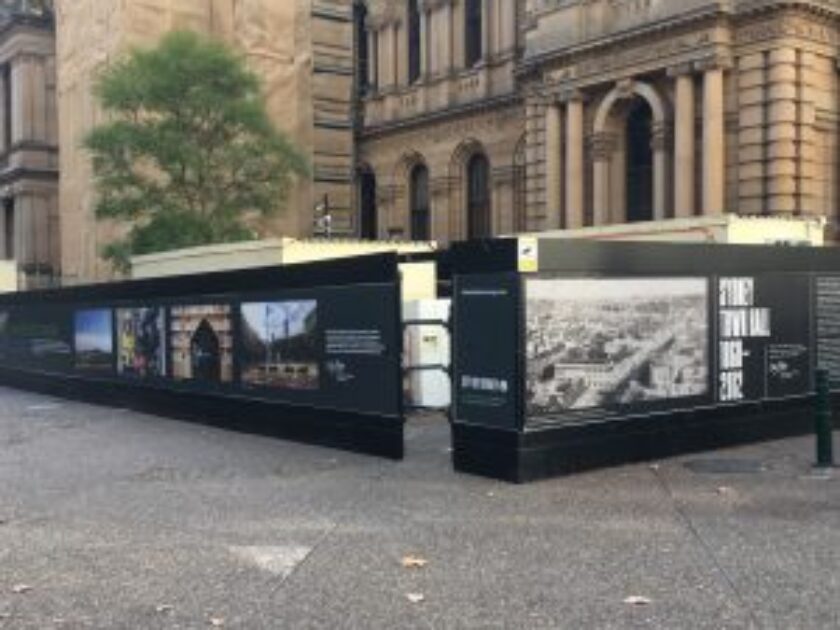Go With the Flow: Banner Mesh for High Wind Sites
 19 February 2021
19 February 2021 4 mins read
4 mins read
Grand format printing is used everywhere, from indoor displays to construction sites, retail stores and large-scale events. This extraordinary diversity requires highly versatile materials, which combine great visual impact with durability and longevity. The inks and substrates must be perfectly suited to their environment, especially when used outdoors: one wrong choice can cause a beautifully designed banner to lose the battle against the wind and rain at the mercy of the elements.
When passing by temporary fencing around development projects and construction sites, you'll notice most sites use banner mesh or shade cloth - and with good reason! Outdoor sites, especially those in high-wind areas, require specific materials precisely suited to these harsh conditions. But what exactly is the impact of wind on a banner?
Banners in the Wind
Wind-resistance is essential for the survival of both your banner and the structure to which it is tensioned. Traditional, tight-mesh substrates create wind-drag when exposed to intense winds, resulting in a dangerous 'sail effect' which adds strain to the banner and the structure. The most significant resulting danger is to the eyelets, which are the banner's weakest point and consequently suffer tears and rips. Ultimately, they run the risk of being torn off altogether. The sail effect can also cause the temporary fencing to be pulled down, or add dangerous load and strain to the supporting building.
Winds are a particular risk factor in coastal or rural areas, storm and cyclone regions, or anywhere in an environment which creates a wind funnel. In these conditions, choosing suitable materials for your project can make the difference between long-term impact or a forgettable display.
Banner Mesh 1 - Wind 0
Mesh banners are the most straightforward solution to the problem of excess wind. They're designed with thousands of tiny gaps that allow wind, light and sound to pass through them without resistance, reducing wind drag and sail effects. This, in turn, reduces pressure on the structures and fittings which support the banner. Some mesh banners are even explicitly designed for high wind areas. They're carefully engineered for maximum durability in harsh conditions: they're light, with top-of-the-line wind-through properties.
At Mesh Direct, our standard banner mesh embodies the happy marriage of form and function. With high-quality image reproduction and 9 threads per inch, it's perfect for upmarket displays in windy areas, and can be reused time and time again. At 1.6m high, it also allows for easy and effective tensioning on temporary fences.
Our banner mesh panels are, in fact, smaller than temporary fence panels, so they allow wind to escape around the sides of the banner, and beneath it. This further helps to reduce drag on the eyelets and lessens the load placed on the fencing. As a bonus, it also decreases splash-back from the ground in case of storms!
Shade cloth, or scrim, is another loose-weave substrate with very high wind-through properties. It's a cheaper option than banner mesh but has a greater tendency to fray when cut. This makes it ideal for short-term, single-use purposes! However, if you're looking for a durable, long-term solution that will keep its good looks, a roll of banner mesh is the best way forward.
Bonus Tip
At Mesh Direct, we're experts in all things signage. Here is a bonus tip for installing mesh banners in high wind areas! For more information on wind mitigation techniques, have a look here, and don't hesitate to reach out to us if you have any other questions.
The Art of Tensioning
Tensioning is perhaps the crux of banner installation: proper tensioning is crucial to ensuring your signage's longevity! If your tension is too loose, the banner will shift around on the fencings, causing it to become damaged and creating unnecessary strain. On the other hand, if the tension is too tight, the constant pressure and creasing around the eyelets might cause them to give in before their time.
Keep up to date with our projects here.





